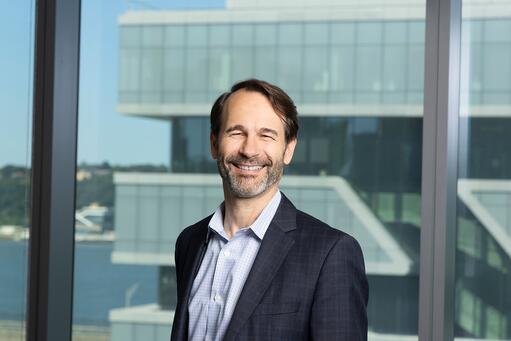Columbia Business School professor Bruce Usher recently illustrated via anecdote just how fast a lukewarm investment niche can heat up.
On a single Tuesday in July 2021, two of the world's largest asset managers—TPG and Brookfield—announced new funds focused on climate investment strategies. TPG came first, announcing a whopping $5.4 billion climate fund; Brookfield upstaged that headline only hours later, with its unveiling of a new $7 billion climate fund.
Since then, the investment capital following themes of climate and social sustainability—not to mention the public attention devoted to this realm—has only continued to chart an exponential rise.
With the influx of capital and attention has come new scrutiny, with pressing questions from critics and proponents alike: Can an investment approach really help us achieve our most critical climate goals? If so, which investment strategies will (or won't) help us get there?
Usher, co-director of the Tamer Center for Social Enterprise, tackles these questions and many others in his new book, Investing in the Era of Climate Change, which Publishers Weekly named a Top 10 Business & Economics title for fall.
In September, Usher sat down with Financial Times contributor Sarah Murray for a public event at Cooperman Commons to discuss his book and its most important takeaways for investors.
At its core, Usher's message is hopeful: “We can address climate change; the technology exists, and the capital exists,” he said at the event, noting that the total capital required will likely reach $100 trillion to $150 trillion over the next 30 years. He added a critical caveat: “That doesn't mean we will address climate change.” Investors will be among the most important actors ensuring that we get there, Usher believes.
Usher and Murray's conversation highlighted Four Investment Strategies to Combat Climate Change, with Usher offering his deeply informed and honest Finance & Economics of the pros and cons of each.
Strategy No. 1: Divestment of fossil fuels
In 2016, Usher recalled, the divestment movement appeared at Columbia's doorstep when a group of students invaded President Lee Bollinger's office to demand that the university divest from fossil fuels; they stayed in his office for the next seven days.
The next year, Columbia divested from thermal coal companies, and in 2021, it began taking steps to divest from oil and gas companies as well (with the caveat that the university can continue to invest in companies that have a credible plan to transition to net zero).
Though he supported the university's move, Usher noted that “we shouldn't fool ourselves” about the real-world climate-saving impacts of this strategy.
“Does divestment help us address climate change? The simple answer in my research is no,” he said.
After all, roughly 90 percent of the fossil fuel industry's revenues are earned by privately held companies. What's more, divesting from fossil fuel companies means relinquishing any potential for investor engagement with those companies—which can be a significant tradeoff for large institutions, especially.
Usher hastened to add that this doesn't mean that divestment from climate-change-causing businesses and industries is necessarily the wrong move.
“What divestment does do, which is very important, is it aligns our personal values with our investments,” he said.
Strategy No. 2: Investment approaches that consider environmental, social, and corporate governance (ESG) factors
ESG has swollen into a massive industry since it arrived on the scene less than two decades ago, with somewhere between $40 trillion and $100 trillion of assets now following ESG principles.
Usher broke down what, exactly, an ESG investment strategy refers to: It's when an investment decision-maker considers the environmental, social, and corporate governance (E, S, and G) factors of a potential investment in addition to the traditional financial factors at play.
“It appears to be a smart way of investing,” Usher said. “You're considering information that previously wasn't thought about very closely.”
But there's a problem, he added: “Considering those factors and picking companies that way doesn't really do much for climate change.” It may help highlight risks within an investment portfolio, but its focus isn't on supporting the companies and technologies with proven solutions. That's where the next two strategies come in.
Strategy No. 3: Impact-first investing
The best-known impact-first investor, according to Usher, is someone most everyone has heard of: Bill Gates. With a stated goal of doing what he can to help address climate change and deep-enough pockets that he can afford to take a loss (or a few), he's the type of investor who melds philanthropy and early-stage investing to help cultivate fledgling companies with promise.
“Maybe he invests in 50 companies and only five succeed,” Usher said. “Maybe he loses money. But when companies do succeed, he's proven to the traditional capital that there's an opportunity—go get it. That's when your traditional capital moves in. Gates and other impact-first investors are acting as a type of catalytic capital.”
Unfortunately, for this and other types of investment strategies, emerging markets present a particular challenge. Often, capital is scarce and expensive in these regions, and rarely can extend over a sufficiently long time horizon.
This is where quasi-government institutions like the United Nations and World Bank can step in to create public-private partnerships and fill gaps that private capital—even impact-first investors—is unlikely to fill, Usher explained.
Strategy No. 4: Thematic investing
In discussing thematic investing, Usher emphasized one of his key points: We already have the technology we need to solve climate change; it just needs the capital to scale. This is where thematic investing must come in.
As a strategy, thematic investing typically focuses on private companies. It seeks out those products and businesses that are already commercial and asks, how can we scale these? Typically, thematic funds operate around specific themes and key drivers shaping the future and looks for ways to profit from investing in their development.
How can the industry push more investment managers to invest along climate themes? “The answer is, you do it, you make great returns, and then the big firms wake up and jump in,” Usher said. “As of just the last two to three years, pretty much every large investment manager has a thematic climate fund.”
The downside to a thematic climate strategy is that it's not available to some of the biggest asset owners out there. Institutional investors like pension funds can't take on the risk of new, unproven technology, nor can they legally accept the long investment time frames required to get some of the most important new technologies off the ground.
Usher underscored that for the sake of the climate and for the potential wealth of investors' portfolios, the time to get in on a climate-focused investment strategy is now.
“I think the general perception of climate change is that time has nearly run out — and that we're too late,” Usher said. “I've been working in this area for 20 years; it's not too late.” On the contrary, 20 years ago, it was too early to pour money into climate solutions—and in investing, he added, being early is the same as being wrong.
“I am less worried than I was 20 years ago,” he said. “Twenty years ago, we knew the science of climate change. And frankly, we did not have the solutions.” Now that those solutions are emerging and expanding, Usher hopes investors recognize their moment and swoop in.
Watch Professor Bruce Usher discuss the risks and opportunities for investors as the world tackles the challenge of climate change.

